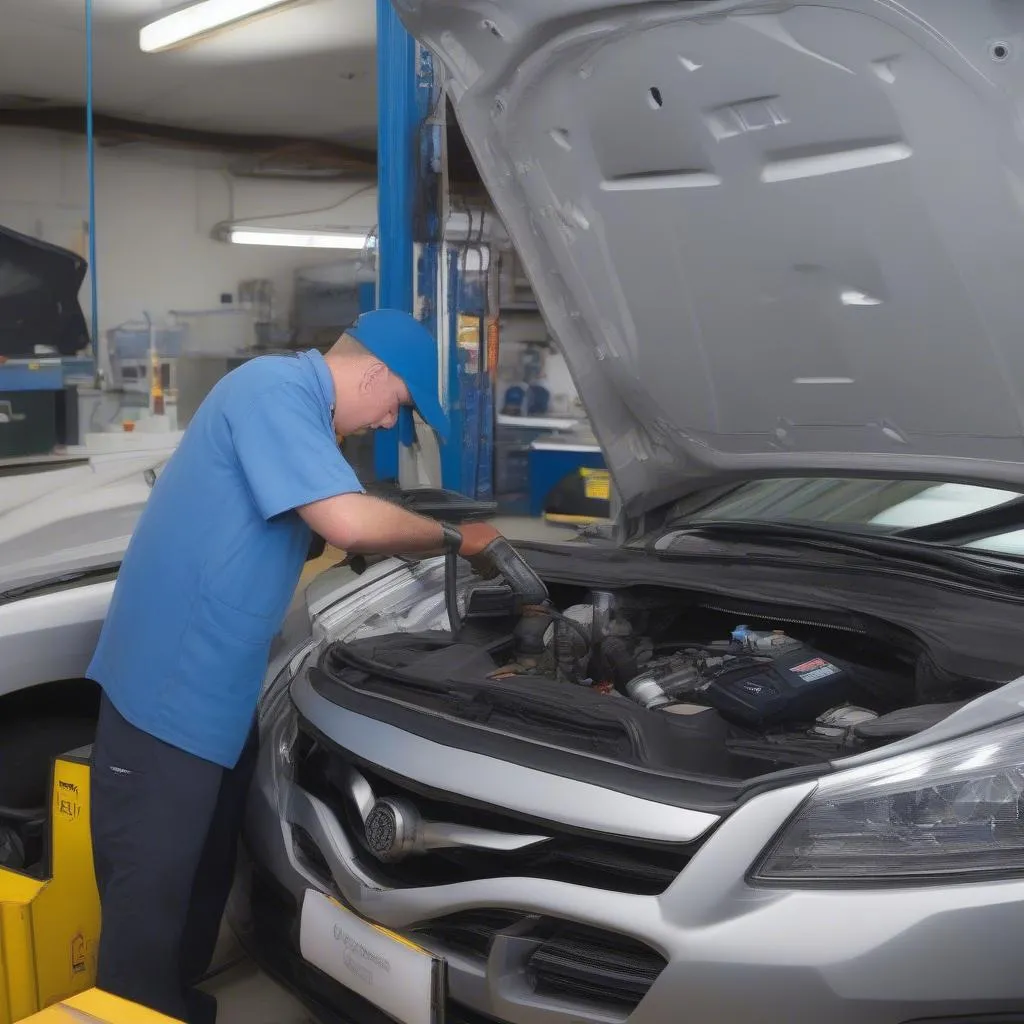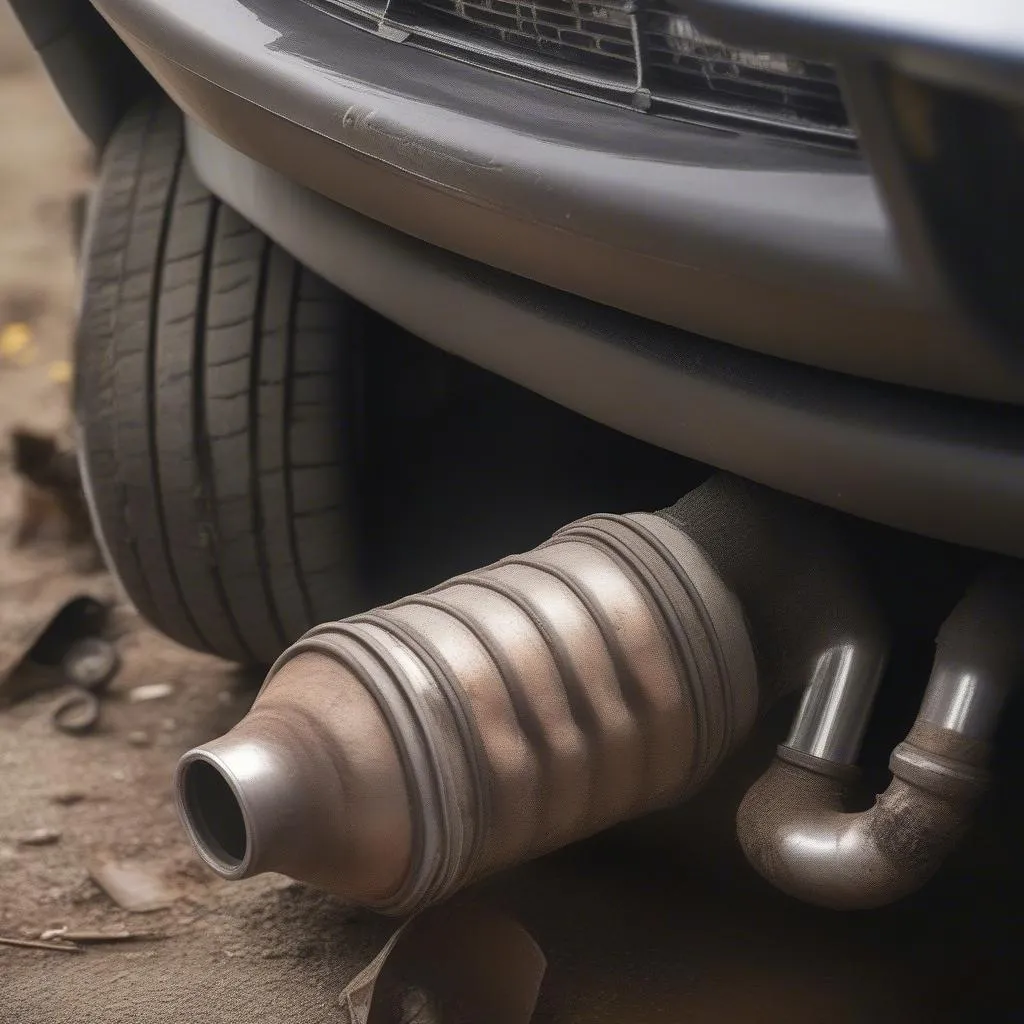Have you ever encountered the dreaded “Check Engine” light illuminating on your dashboard? It’s a frustrating experience, and it’s often accompanied by a wave of anxiety about what might be wrong with your car. One of the common reasons for this warning light is a problem with your catalytic converter. Thankfully, with today’s advanced diagnostic tools, like OBD2 scanners, you can easily diagnose and pinpoint the issue. This brings us to the topic of this article: the Catalyst Test Obd.
What is a Catalyst Test Obd?
The “Catalyst Test OBD” refers to a specific test performed by an OBD2 scanner to assess the functionality of your vehicle’s catalytic converter. The catalytic converter plays a crucial role in reducing harmful emissions from your car’s exhaust system. It’s designed to transform harmful gases like carbon monoxide, hydrocarbons, and nitrogen oxides into less harmful substances.
Why is the Catalyst Test Obd Important?
From a Mechanic’s Perspective:
As a mechanic, the catalyst test OBD is an invaluable tool for quickly and accurately diagnosing potential problems with the catalytic converter. This allows us to identify faulty catalytic converters before they cause major damage, potentially saving you time and money in the long run.
From a Technical Perspective:
The catalyst test OBD provides a comprehensive evaluation of the catalytic converter’s efficiency. It analyzes various parameters related to exhaust gas composition, including oxygen sensor readings and exhaust gas backpressure. This data helps us determine whether the catalytic converter is performing as intended.
For instance,  OBD2 Scanner Monitoring Oxygen Sensor Readings
OBD2 Scanner Monitoring Oxygen Sensor Readings
From an Economic Perspective:
A properly functioning catalytic converter is essential for meeting emissions standards in many countries. A faulty catalytic converter can lead to increased emissions, resulting in fines and penalties. The catalyst test OBD allows you to identify and address potential problems before they become costly issues.
How does the Catalyst Test Obd work?
The catalyst test OBD uses sensors and actuators within your car’s exhaust system to evaluate the efficiency of the catalytic converter. These sensors monitor the composition of the exhaust gases, while actuators control the flow of exhaust gases through the system.
Here’s a simplified explanation of the process:
- Oxygen Sensor Readings: The OBD2 scanner monitors the oxygen sensor readings before and after the catalytic converter. This data helps determine if the catalytic converter is effectively converting harmful gases.
- Exhaust Gas Backpressure: The OBD2 scanner measures the exhaust gas backpressure. An abnormally high backpressure can indicate a blocked or malfunctioning catalytic converter.
- Test Cycle: The OBD2 scanner initiates a specific test cycle involving various driving conditions, such as acceleration, deceleration, and engine speed variations. This helps simulate real-world driving conditions and assess the catalytic converter’s performance under different loads.
What does a failed Catalyst Test Obd mean?
A failed catalyst test OBD could indicate a few different problems:
- Catalytic converter failure: The most common reason for a failed catalyst test is a malfunctioning catalytic converter. Over time, the catalytic converter can become damaged, blocked, or simply less effective due to age, wear and tear, or excessive heat.
- Oxygen sensor malfunction: A faulty oxygen sensor can provide inaccurate readings, leading to a false-positive catalyst test result.
- Exhaust system leak: A leak in the exhaust system can affect the accuracy of the catalyst test OBD.
What are the common symptoms of a bad catalytic converter?
Besides a failed catalyst test OBD, there are several other symptoms that could point to a bad catalytic converter:
- Check Engine light: As mentioned earlier, this is one of the most common symptoms of a bad catalytic converter. The light usually illuminates with a specific code related to the catalytic converter.
- Reduced engine power: A clogged catalytic converter can restrict exhaust gas flow, leading to a loss of engine power.
- Rough idle: A damaged or blocked catalytic converter can cause the engine to idle roughly.
- Strange noises: You may hear rattling or clunking noises from the exhaust system, especially during acceleration or deceleration.
- Strong exhaust odor: A bad catalytic converter can result in an unusually strong exhaust odor, often resembling a rotten egg smell.
For instance,  Catalytic Converter Failure Symptoms
Catalytic Converter Failure Symptoms
Can I fix a bad catalytic converter myself?
Unfortunately, fixing a bad catalytic converter is a complex process that often requires specialized tools and knowledge. If you suspect a problem with your catalytic converter, it’s best to consult a qualified mechanic. Attempting to repair or replace the catalytic converter yourself could be dangerous and could potentially void your warranty.
How can I prevent catalytic converter problems?
While you can’t completely prevent catalytic converter issues, there are a few steps you can take to minimize the risk:
- Regular maintenance: Regularly servicing your car, including oil changes and inspections, can help prevent problems that can damage the catalytic converter.
- Avoid using leaded fuel: Leaded fuel can damage the catalytic converter. Always use unleaded gasoline in your vehicle.
- Use high-quality engine oil: Using the correct engine oil and changing it at the recommended intervals helps prevent excessive engine wear and tear, which can contribute to catalytic converter failure.
- Avoid driving in harsh conditions: Driving in dusty or extreme weather conditions can put extra stress on the catalytic converter.
How much does it cost to replace a catalytic converter?
The cost of replacing a catalytic converter varies depending on the make and model of your vehicle, as well as the type of catalytic converter needed. You can expect to pay anywhere from a few hundred dollars to several thousand dollars for a new catalytic converter.
Where can I find a reliable mechanic to diagnose and repair my catalytic converter?
If you’re unsure where to go for catalytic converter repair, try asking for recommendations from friends, family, or other trusted sources. You can also search online for reputable mechanics in your area.
What other OBD2 test are there besides the Catalyst Test?
The catalyst test is just one of many tests that can be performed using an OBD2 scanner. Other important tests include:
- Oxygen sensor test: This test assesses the functionality of the oxygen sensors, which are essential for monitoring the air-fuel mixture in the engine.
- Evaporative Emission System (EVAP) test: This test checks for leaks in the EVAP system, which controls fuel vapor emissions.
- Misfire test: This test identifies misfires in the engine cylinders, which can cause a variety of problems.
- Fuel system test: This test evaluates the fuel system, including fuel injectors, fuel pressure, and fuel pump.
What are some related articles on this website?
If you’re interested in learning more about OBD2 diagnostics and car maintenance, we encourage you to check out these related articles on our website:
- OBD Readiness
- 2008 Infiniti G35 OBD Port Location
- List of OBD Codes
- 2009 Honda Pilot OBD Port Location
- 2004 Hyundai Santa Fe OBD Port Location
What if I still have questions about the Catalyst Test Obd?
If you have any further questions about the Catalyst Test OBD or need assistance with diagnostics tools, please don’t hesitate to contact us. We offer 24/7 support through WhatsApp at +84767531508. We’re happy to answer your questions and provide guidance.
We hope this guide has provided you with a deeper understanding of the Catalyst Test OBD and its significance for your European car. By staying informed and taking proactive measures, you can help ensure your vehicle’s performance and safety.